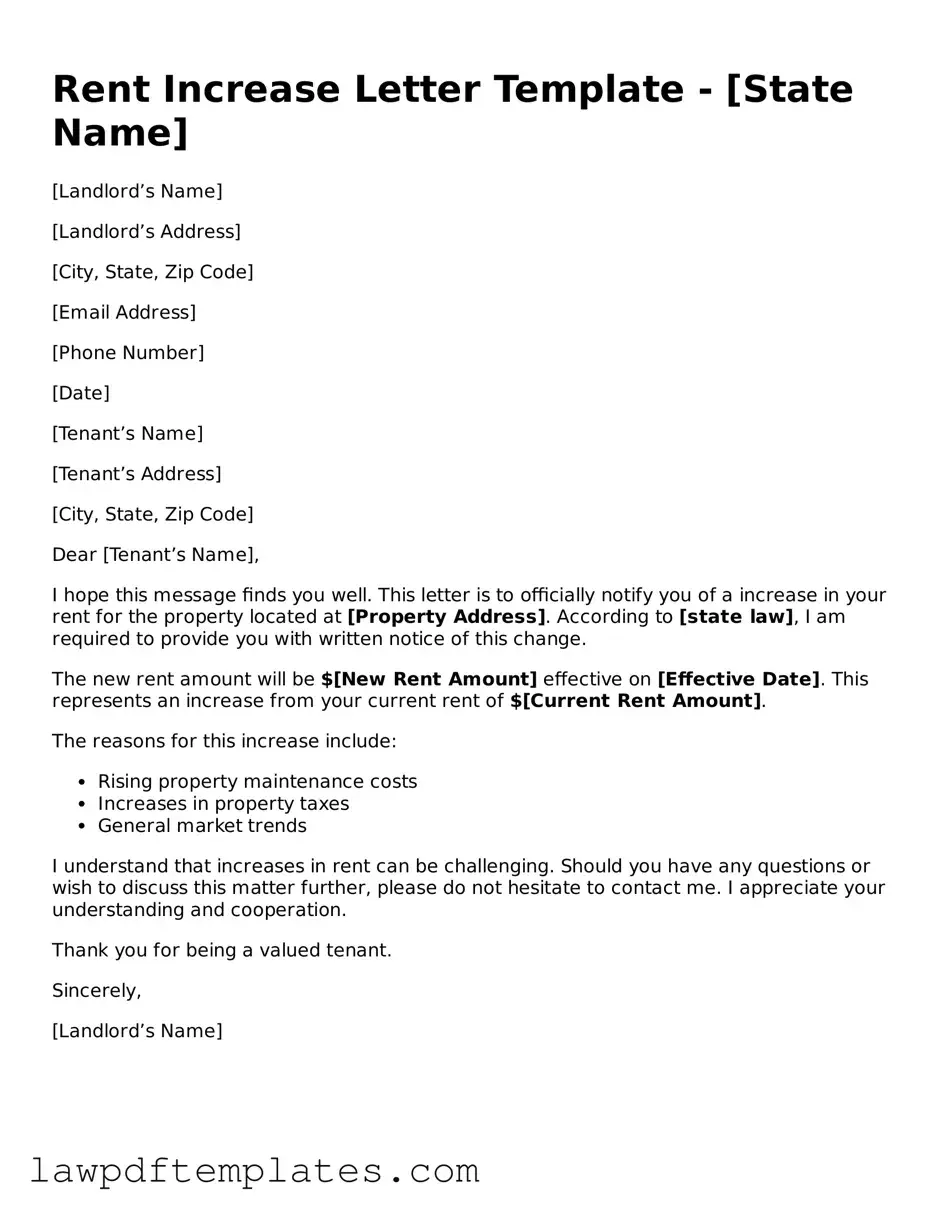Attorney-Approved Rent Increase Letter Document
A Rent Increase Letter is a formal document that landlords use to notify tenants of an upcoming increase in rent. This letter outlines the new rental amount, the effective date of the increase, and any relevant details required by local laws. Understanding how to properly fill out this form can help ensure a smooth transition for both landlords and tenants, so take the next step by clicking the button below to get started!
Get My Rent Increase Letter
